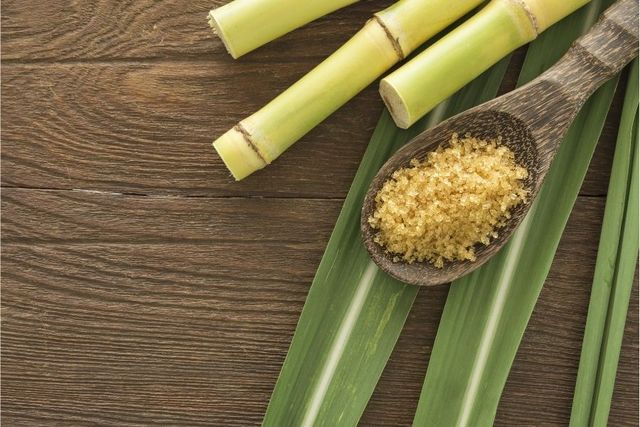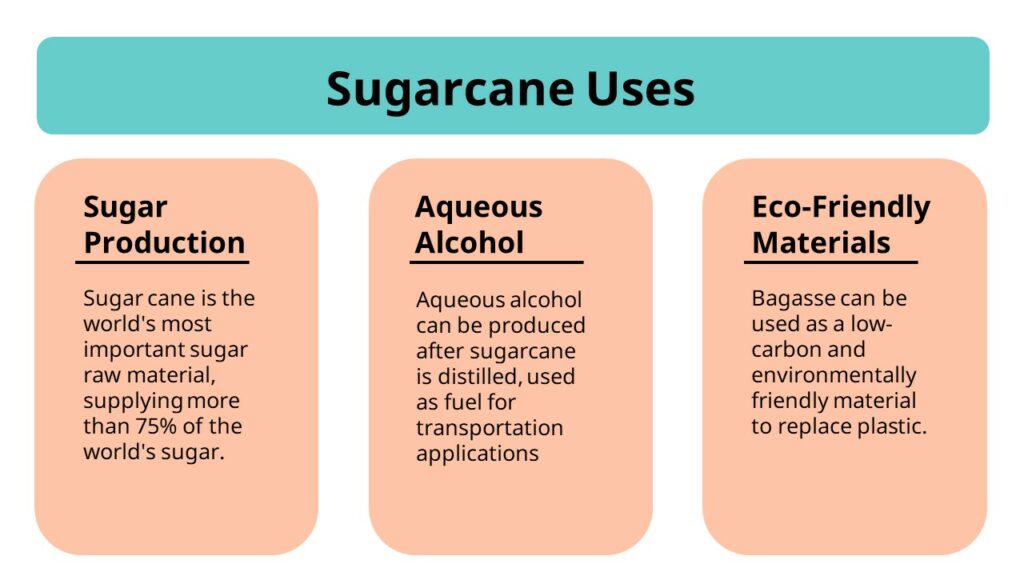Checking Out the Full Line of Process Chemicals: What Are Sugar Canes Used For in Manufacturing?
Sugar walking canes play a critical function in different making procedures, acting as a versatile resources. Their high sucrose web content makes them important in the food industry, while developments in biofuels and naturally degradable plastics highlight their possible beyond traditional uses. In addition, sugar walking cane extracts are getting recognition in drugs and nutraceuticals for their health advantages. The diverse applications of sugar walking sticks raise intriguing concerns regarding their future in industrial fields. What chances exist in advance?

The Journey of Sugar Cane: From Area to Manufacturing facility
As the sunlight rises over vast areas, the journey of sugar walking cane begins, marked by thorough cultivation and gathering procedures. Farmers choose ideal varieties, guaranteeing durable development in suitable climates. Regular watering and nutrient monitoring are vital, promoting healthy stalks abundant in sucrose. When fully grown, the walking stick is gathered, usually making use of mechanical cutters that efficiently collect the stalks.Once gathered, the sugar walking stick is delivered to refining centers where it goes through washing and crushing to extract juice. This juice is then clarified, eliminating pollutants with sedimentation and purification. The clear liquid is concentrated by evaporation, and consequently taken shape to generate raw sugar.Throughout this trip, quality assurance is critical, making sure that the last item satisfies industry criteria. The change of sugar walking stick right into raw sugar highlights a complex interplay of agriculture and production, setting the phase for its diverse applications in various industries.
Biofuels: Harnessing Power From Sugar Cane
A significant portion of the globe's biofuel manufacturing is originated from sugar walking stick, which acts as a renewable resource resource. This functional crop is primarily refined to remove sucrose, which can be fermented to produce ethanol. Ethanol acquired from sugar walking stick is not only a clean-burning gas choice however likewise adds to decreasing greenhouse gas discharges compared to conventional nonrenewable fuel sources. In countries like Brazil, sugar cane biofuel has actually ended up being a substantial part of the power matrix, minimizing and powering lorries dependence on imported oil. The farming of sugar cane for biofuels likewise sustains country economies, offering tasks in farming and processing. Furthermore, the by-products of sugar walking stick handling, such as bagasse, are made use of in energy generation, further enhancing the sustainability of the production cycle. In general, sugar cane biofuels stand for an appealing method for attaining energy freedom while cultivating environmental stewardship.
Biodegradable Plastics: The Sustainable Option
What if the remedy to the worldwide plastic crisis depends on biodegradable options? Biodegradable plastics, derived from renewable energies such as sugar walking sticks, provide a cutting-edge approach to reducing plastic waste. Unlike traditional plastics, which can take centuries to decompose, these green products break down normally, minimizing environmental impact.The manufacturing of eco-friendly plastics entails utilizing sugars from sugar canes to create polylactic acid (PLA) and other biopolymers. These materials preserve comparable functionality to conventional plastics, making them suitable for various applications, consisting of packaging, utensils, and agricultural films.As consumers and markets shift toward sustainability, naturally degradable plastics use a compelling alternative. They not only minimize dependence on nonrenewable fuel sources but additionally support a round economic situation by going back to the earth without leaving damaging deposits. The increasing need important source for such products signifies a substantial step towards resolving the pressing need for more sustainable manufacturing services when faced with environmental difficulties.
Sugar Walking Cane Extracts in Nutraceuticals and drugs

The Future of Sugar Walking Stick in Industrial Applications
As industries proceed to look for sustainable and sustainable sources, sugar cane is positioned to play a critical role in different commercial applications beyond its standard use in sugar manufacturing. Its biomass uses a renewable resource for biofuels, decreasing dependence on nonrenewable fuel sources and contributing to lower carbon emissions. Furthermore, sugar cane's spin-offs, such as bagasse and molasses, are being discovered for their capacity in bioplastics and biodegradable products, resolving the growing need for eco pleasant packaging solutions.Research is likewise underway to boost the effectiveness of sugar cane derivatives in different industries, consisting of textiles, cosmetics, and building and construction. By taking advantage of the special homes of sugar walking stick, makers can produce ingenious products that straighten with customer preferences for sustainability. As innovation advancements, the adaptability of sugar walking cane will likely expand, strengthening its position as a key gamer in the change towards an extra lasting industrial landscape.

Regularly Asked Concerns
What Is the Process of Refining Sugar Cane Into Sugar?
The process of refining sugar walking stick right into sugar entails harvesting, squashing to remove juice, making clear the juice, vaporizing water, crystallizing sugar, and ultimately drying out and packaging the improved product for circulation and usage. (What Are Sugar Canes Used For)
Exactly How Does Sugar Cane Effect Citizen Economies?
Sugar walking cane significantly affects local economies by producing work, enhancing agricultural production, and creating profits through exports. Its farming supports little farmers and regional organizations, promoting area growth and boosting total economic stability in sugar-producing regions.
Exist Any Environmental Interest In Sugar Walking Cane Farming?
Environmental issues associated with sugar walking cane farming consist of logging, dirt deterioration, water use, and pesticide overflow (What Are Sugar Canes Used For). These issues effect local environments and add useful content to climate adjustment, triggering require even more lasting farming practices within the sector
What Are the Nutritional Benefits of Sugar Walking Stick?
The dietary benefits of sugar cane include its rich material of vitamins, minerals, and anti-oxidants. It gives natural energy, supports hydration, and might help digestion, contributing positively to general health when consumed in small amounts.
Exactly How Does Sugar Cane Compare to Various Other Crops in Sustainability?
Sugar walking cane displays higher sustainability contrasted to many plants due to its reliable use of land and water resources, ability to create biofuels, and possibility for carbon sequestration, contributing favorably to ecological wellness and farming methods. When mature, the walking cane is harvested, typically making use of mechanical cutters that successfully gather the stalks.Once accumulated, the sugar walking stick is transported to refining facilities where it undertakes milling and washing to remove juice. Unlike conventional plastics, which can take centuries to decompose, these environment-friendly products break down normally, decreasing environmental impact.The manufacturing of eco-friendly plastics involves using sugars from sugar canes to produce polylactic acid (PLA) and various other biopolymers. Commonly recognized for their role in sugar production, sugar walking stick essences are significantly locating applications in the nutraceutical and pharmaceutical markets. As sectors proceed to seek sustainable and sustainable resources, sugar walking stick is positioned to play a crucial role in numerous industrial applications beyond its traditional use in sugar manufacturing. Furthermore, sugar walking stick's byproducts, such as bagasse and molasses, are being discovered for their potential in bioplastics and biodegradable materials, addressing the growing demand for eco pleasant product packaging solutions.Research is additionally underway to improve the performance of sugar walking stick derivatives in different markets, consisting of fabrics, cosmetics, and building.